In S.F., the future of public housing will share space with high rent homes
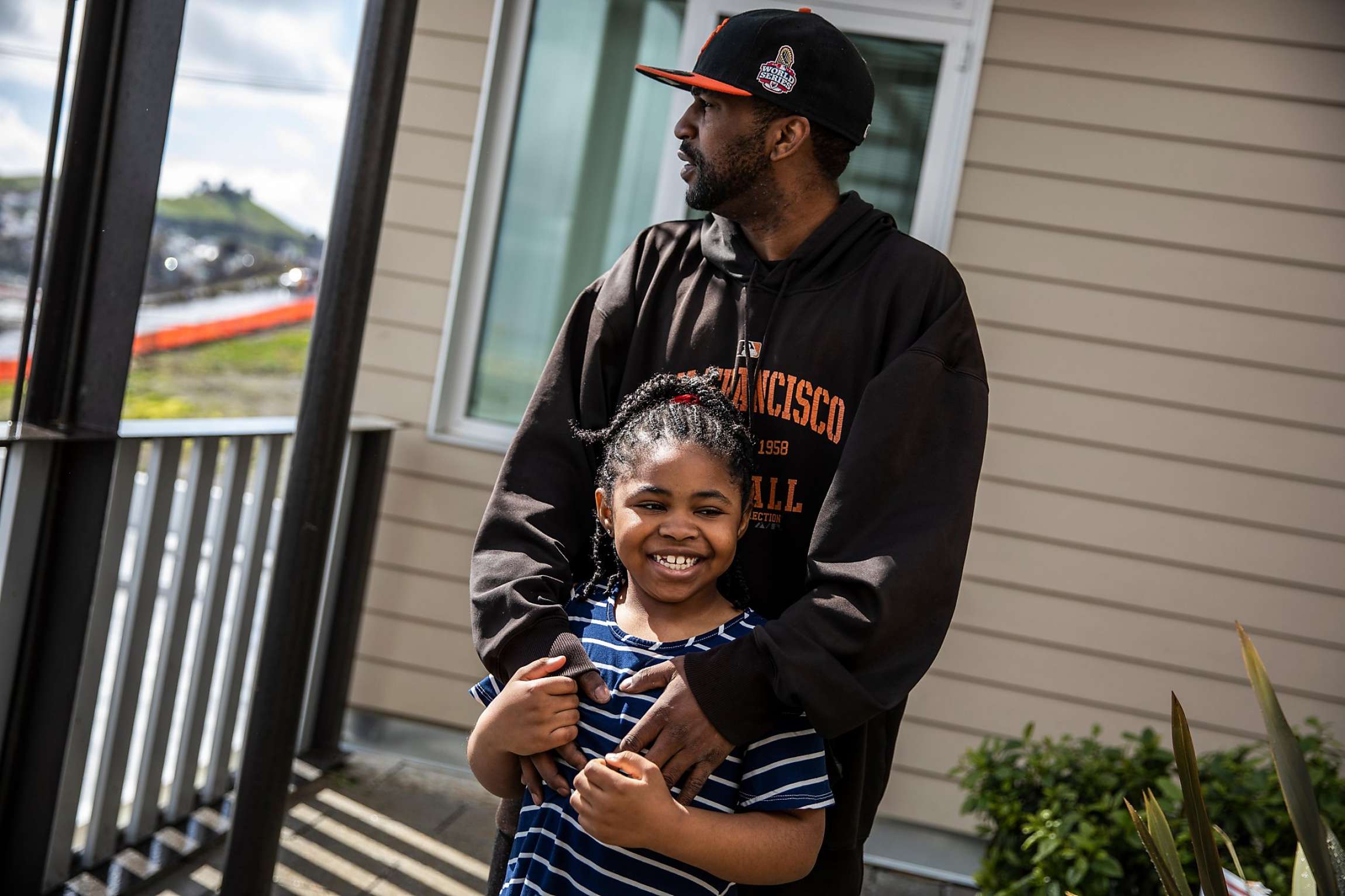 Micah Conner, and daughter Mileesa, 7, stand for a portrait in the outdoor play area of their home at 1101 Connecticut in the Potrero Annex-Terrace neighborhood of San Francisco.
Micah Conner, and daughter Mileesa, 7, stand for a portrait in the outdoor play area of their home at 1101 Connecticut in the Potrero Annex-Terrace neighborhood of San Francisco.
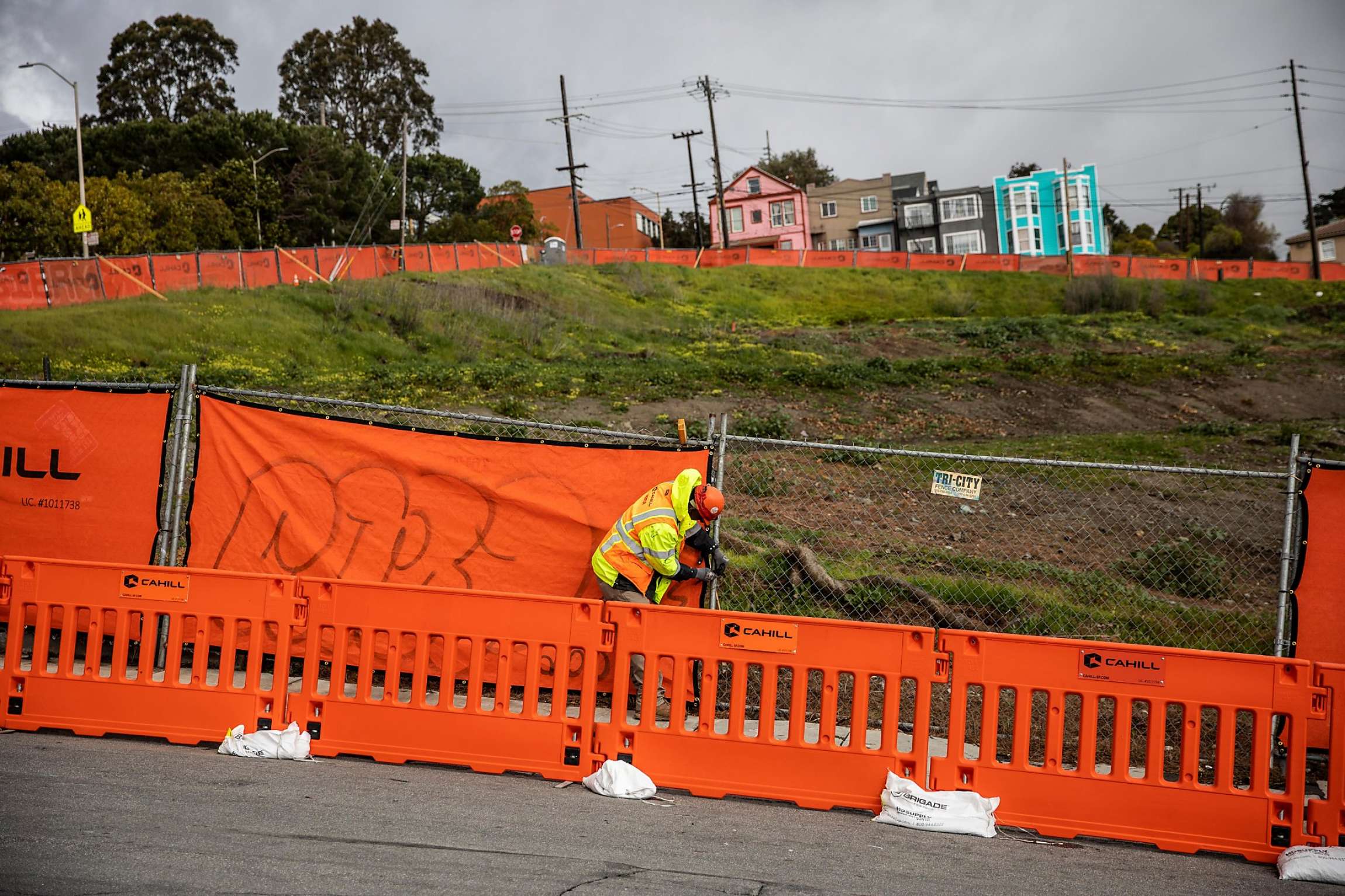 A worker fixes a fence cover at a construction site at Connecticut and 26th streets.
A worker fixes a fence cover at a construction site at Connecticut and 26th streets.
The Potrero redevelopment is one of four projects by Hope SF, a multibillion-dollar program that will eventually tear down and rebuild 1,894 public housing units, while adding 3,226 apartments and condos, a mix of affordable and market-rate homes. The plan will transform four of the city’s most neglected communities — Sunnydale, Hunters View, Alice Griffith and Potrero Terrace and Annex.
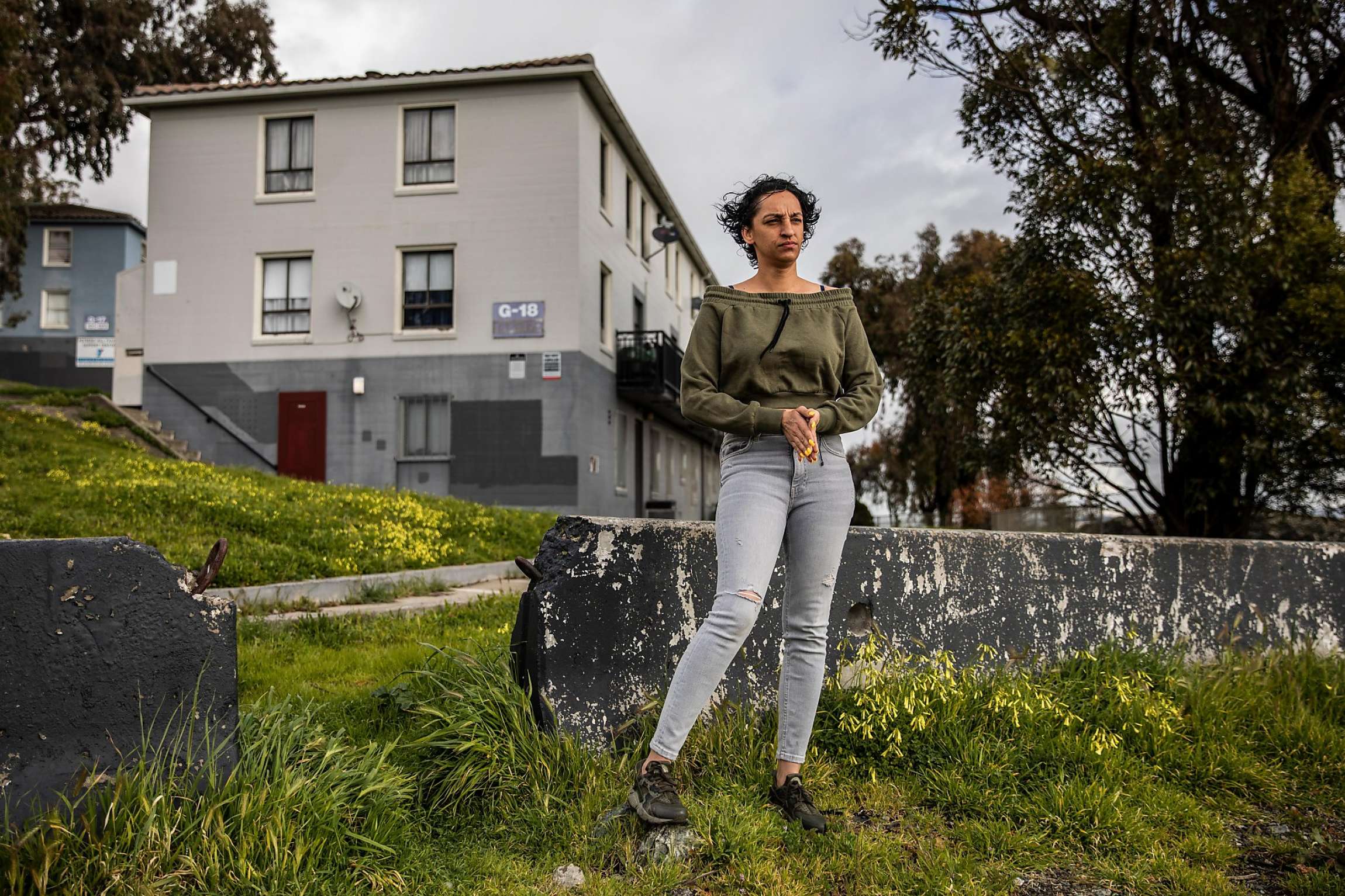 Portrero Annex resident Jeris Woodson says newcomers could disrupt the close-knit neighborhood.
Portrero Annex resident Jeris Woodson says newcomers could disrupt the close-knit neighborhood.At Potrero, the first phase, completed in June of 2019, was a 72-unit apartment building at 1101 Connecticut St. That new building, on a vacant lot, was filled with residents who were housed in eight former Navy barracks in the 4-acre lot at 26th and Connecticut. Once those residents moved into the new building, it cleared the way for the demolition of the old barracks, which will be replaced by about 350 units, 157 of them replacement housing.
The 4-acre, two-building project on Connecticut Street will be the first new San Francisco public housing complex to share a site with a market rate structure, which will put low-income families side-by-side with households paying $4,000 a month or more.
Bridge Housing Vice President of Development Marie Debor, who is overseeing the project, said that the public housing replacement construction will start this year and the market rate project in 2022. She said the market rate portion, which could have as many as 230 apartments, could include some units affordable to low- or moderate-income families.
Theo Miller, who heads the Hope SF program, said the goal is to make the market rate and affordable buildings as similar as possible. The affordable building will have a gym, play area, day care center and community meeting rooms.
“The market rate building might have fancier bells and whistles, like marble counter tops, to attract that customer base,” he said. “But we stand by our extraordinarily well-designed, high-quality Hope SF units.”
While some residents are apprehensive that mixing high-income residents into the community will result in displacement, several residents who relocated to the new building at 1001 Connecticut say it’s a vast improvement.
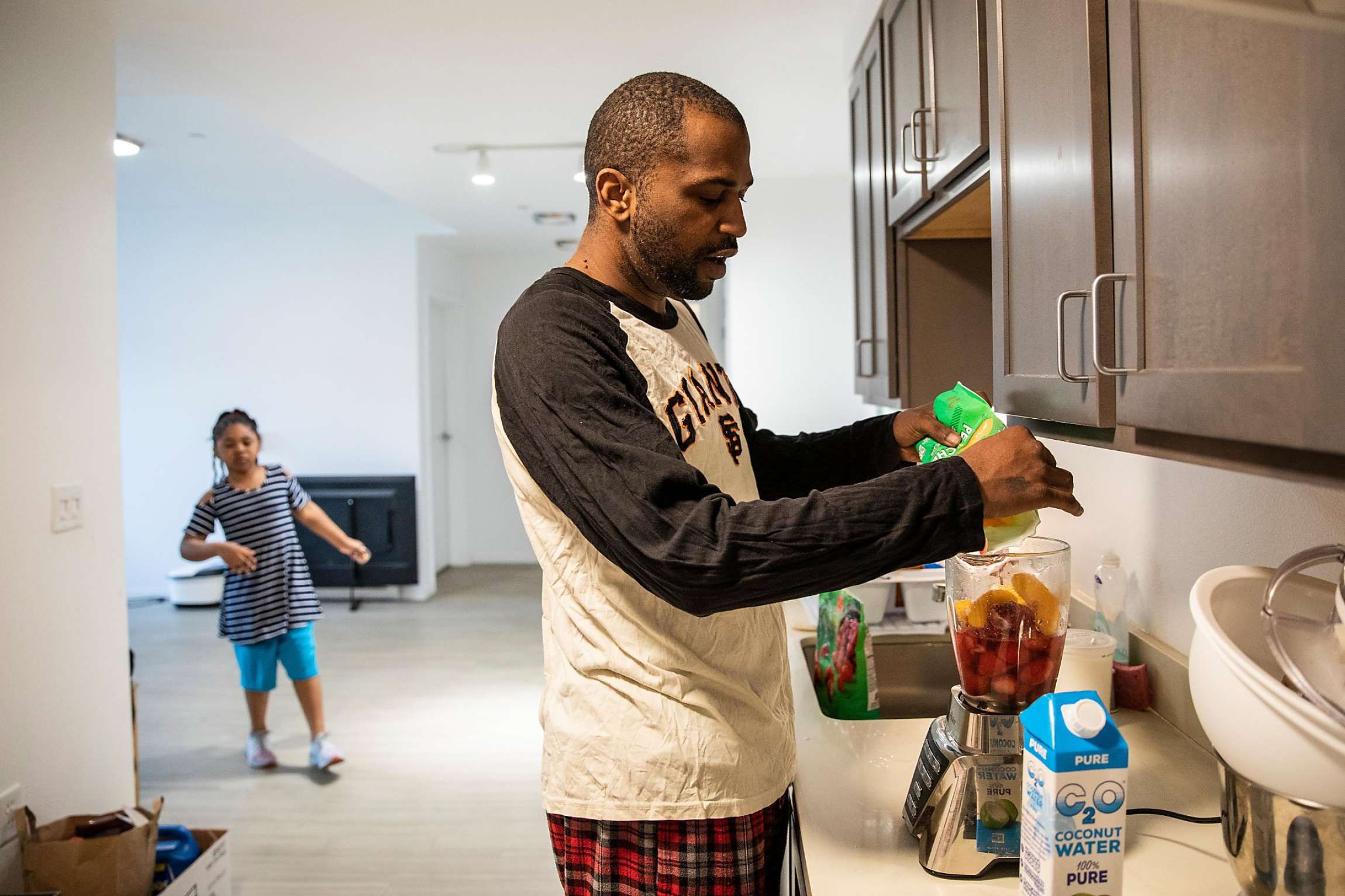 Micah Conner, a security guard and resident of 1101 Connecticut, makes a smoothie at his home in San Francisco. His daughter Mileesa, 7, stands in the background.
Micah Conner, a security guard and resident of 1101 Connecticut, makes a smoothie at his home in San Francisco. His daughter Mileesa, 7, stands in the background.“I love it,” said Micah Conway, a security guard and aspiring filmmaker who lives at 1001 Connecticut. “A clean, safe place to raise your family? Man. It’s a big change from the previous building. They were 80-year-old army barracks with some walls put up to section them off into apartments. This is 2021. They say San Francisco is this center of innovation — except for the public housing. The old place was the opposite of modern.”
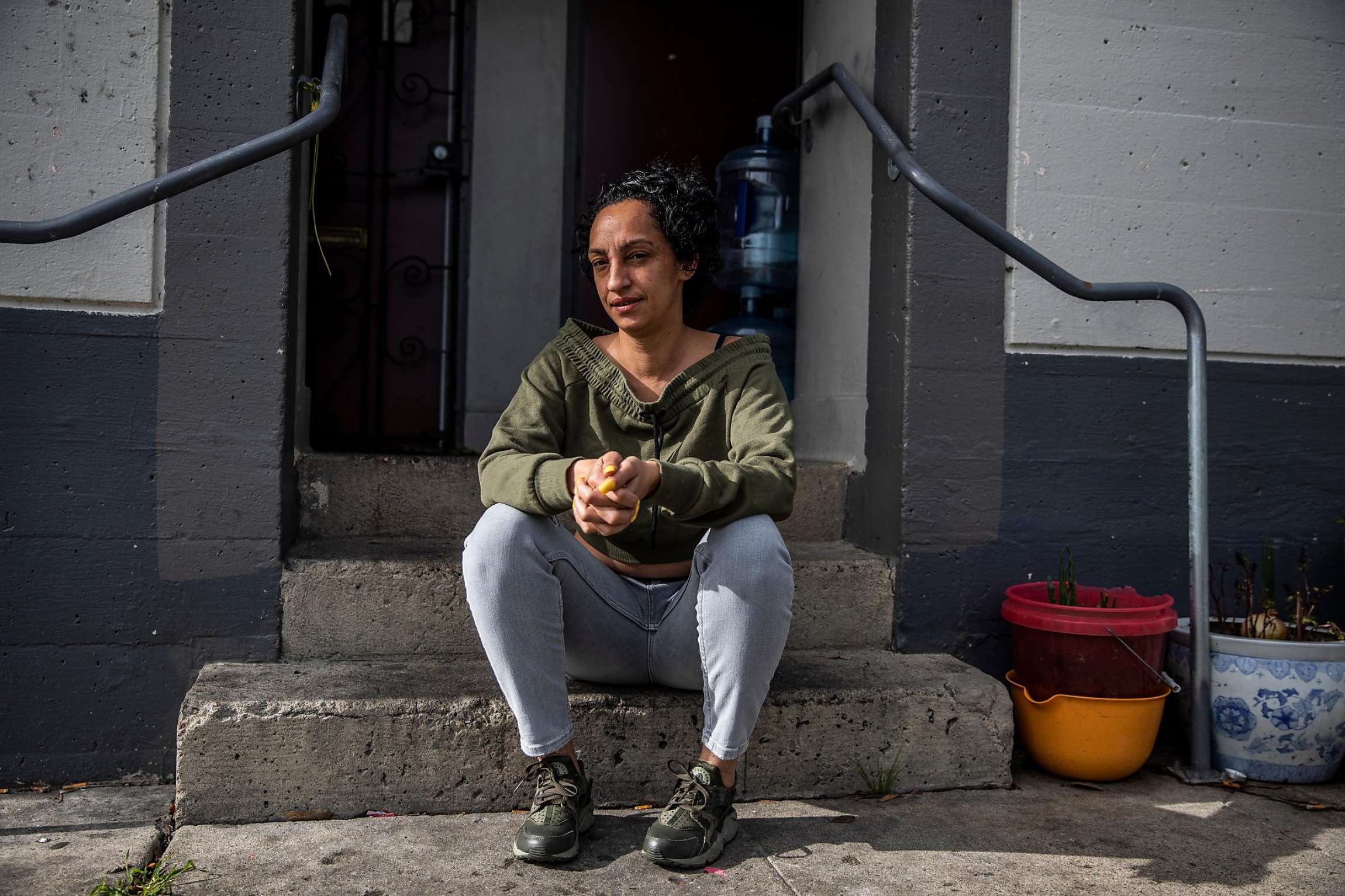 Jeris Woodson, 40, is a case manager at Westside Community Services who grew up in public housing at Potrero Annex-Terrace
Jeris Woodson, 40, is a case manager at Westside Community Services who grew up in public housing at Potrero Annex-TerraceJeris Woodson, a social worker whose family has lived in the Potrero Annex for 50 years, said she is looking forward to moving into a new building, but her older aunt is comfortable where she is and not looking forward to the relocation. “It’s run down here. There is mold inside some of the buildings, severe plumbing issues now and again.”
Woodson said she is worried the market-rate building will be far superior than the replacement units for existing families, and that the newcomers might disrupt what has always been a tight-knit neighborhood.
“They are claiming that it will be mixed income and all the units will be the same,” she said. “That is what they are promising, but that is not how it usually goes.”
Mayor London Breed, who was raised in the Western Addition’s Plaza East public housing development, said that she understands the skepticism of longtime residents.
“As someone who grew up in public housing and has seen the pain caused by broken promises of the past, I know how much it matters that we deliver on our promises to make things better for those who are too often overlooked in this city,” she said.
Written by J.K. Dineen- San Francisco Chronicle staff writer

